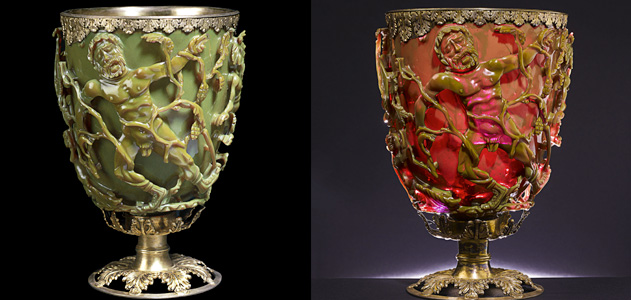The glass chalice, known as the Lycurgus Cup because it bears a scene involving King Lycurgus of Thrace, appears jade green when lit from the front but blood-red when lit from behind—a property that puzzled scientists for decades after the museum acquired the cup in the 1950s. The mystery wasn’t solved until 1990, when researchers in England scrutinized broken fragments under a microscope and discovered that the Roman artisans were nanotechnology pioneers: They’d impregnated the glass with particles of silver and gold, ground down until they were as small as 50 nanometers in diameter, less than one-thousandth the size of a grain of table salt. The exact mixture of the precious metals suggests the Romans knew what they were doing—“an amazing feat,†says one of the researchers, archaeologist Ian Freestone of University College London.
Monthly Archives: August 2013
Curses! The birth of the bleep and modern American censorship
It’s just 45 words: “Congress shall make no law respecting an establishment of religion, or prohibiting the free exercise thereof; or abridging the freedom of speech or of the press; or the right of the people peaceably to assemble, and to petition the Government for a redress of grievances.â€
So, are we abiding by these 45 words?
Curses! The birth of the bleep and modern American censorship | The Verge.
Why Is Software So Slow?
Find out why computer applications lag behind hardware, and how new apps could end drudgery.
How to Catch a Liar on the Internet
Technology makes it easier than ever to play fast and loose with the truth—but easier than ever to get caught.
How to Catch a Liar on the Internet – Megan Garber – The Atlantic.
Google search suggestions by country
See how the US, Canada, UK, Australia & New Zealand view themselves and each other via Google Search suggestions.
Fascinating.



